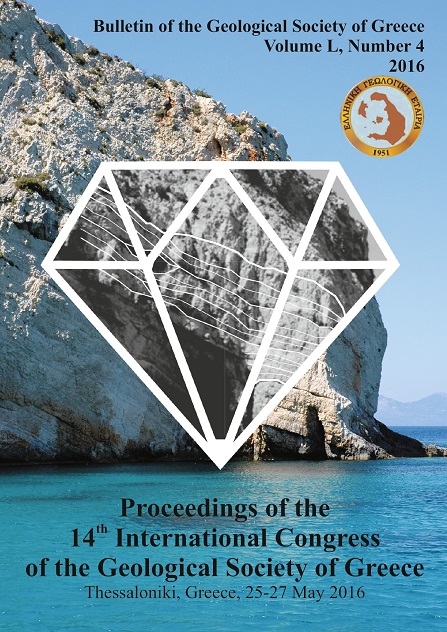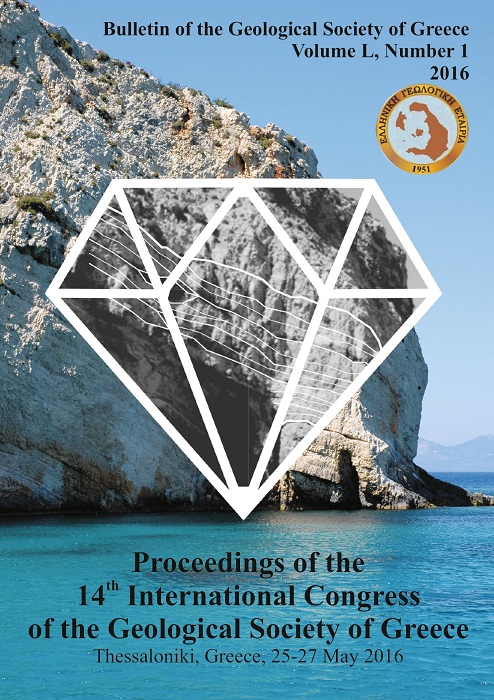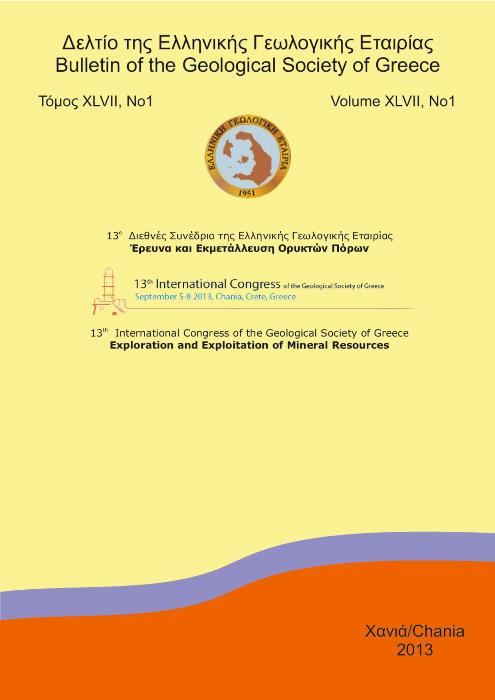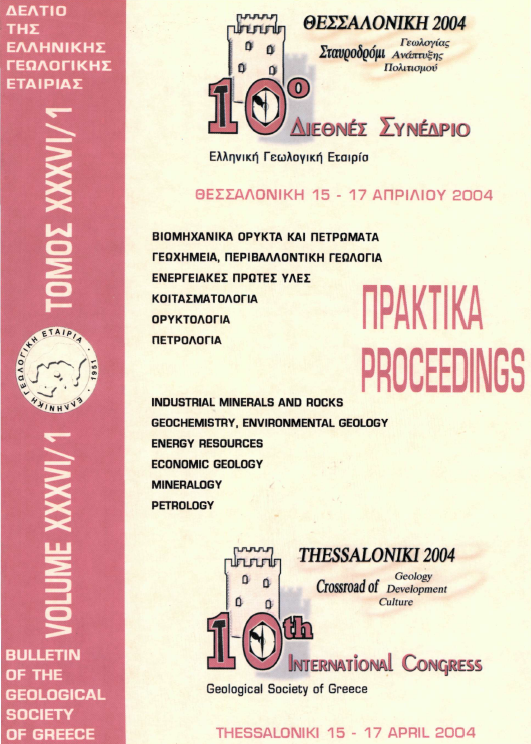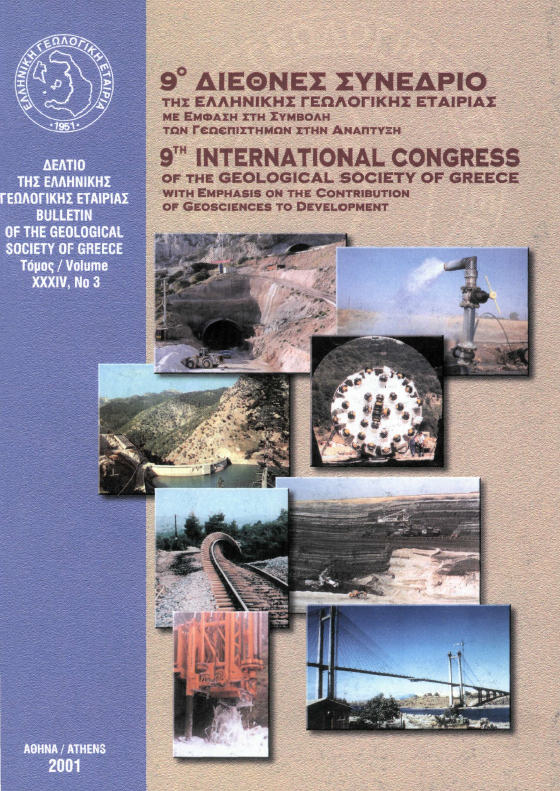GEOCHEMISTRY AND TECTONIC SETTING OF ECLOGITE PROTOLITHS FROM KECHROS COMPLEX IN EAST RHODOPE (N.E. GREECE)
Περίληψη
Eclogites and partially amphibolitized eclogites from the metamorphic Kechros complex in East Rhodope are studied in order to provide the geodynamic framework for the origin of their protoliths. Geochemical evidence from whole rock major and trace element concentrations shows two distinct protolith groups. The low-Fe-Ti eclogites (Charakoma locality) have low-TiO2 content (<0.67 wt%), negative Nb anomalies, positive Sr anomalies, small negative Zr and Hf anomalies and variable enrichments in LILE (e.g. Rb and Ba). The REE patterns are characterized by strong LREE enrichment (LaN/YbN=5.45-5.81), HREE depletion (GdN/YbN=1.60-1.63) and HREE abundance within the range
of 9-10 × chondrite. The high-Fe-Ti eclogites (Kovalo and Virsini locality) have variable Sr contents, small to moderate LILE enrichment, HREE`s similar to MORB values and absence of Nb anomalies. The REE patterns of the Kovalo and Virsini eclogites are characterized by LREE depletion and relative flat MREE HREE patterns at approximately 20-30 × chondrite concentrations. Our results suggest that the protoliths of the Low-Ti eclogites show a continental rifting tectonic environment. In contrast, the protoliths of the High-Ti eclogites indicate formation of their protoliths by partial melting in an extensional oceanic environment.
Λεπτομέρειες άρθρου
- Πώς να δημιουργήσετε Αναφορές
-
Baziotis, I., & Mposkos, E. (2010). GEOCHEMISTRY AND TECTONIC SETTING OF ECLOGITE PROTOLITHS FROM KECHROS COMPLEX IN EAST RHODOPE (N.E. GREECE). Δελτίο της Ελληνικής Γεωλογικής Εταιρείας, 43(5), 2522–2531. https://doi.org/10.12681/bgsg.11659
- Ενότητα
- Πετρολογία και Ορυκτολογία

Αυτή η εργασία είναι αδειοδοτημένη υπό το CC Αναφορά Δημιουργού – Μη Εμπορική Χρήση 4.0.
Οι συγγραφείς θα πρέπει να είναι σύμφωνοι με τα παρακάτω: Οι συγγραφείς των άρθρων που δημοσιεύονται στο περιοδικό διατηρούν τα δικαιώματα πνευματικής ιδιοκτησίας επί των άρθρων τους, δίνοντας στο περιοδικό το δικαίωμα της πρώτης δημοσίευσης. Άρθρα που δημοσιεύονται στο περιοδικό διατίθενται με άδεια Creative Commons 4.0 Non Commercial και σύμφωνα με την οποία μπορούν να χρησιμοποιούνται ελεύθερα, με αναφορά στο/στη συγγραφέα και στην πρώτη δημοσίευση για μη κερδοσκοπικούς σκοπούς. Οι συγγραφείς μπορούν να: Μοιραστούν — αντιγράψουν και αναδιανέμουν το υλικό με κάθε μέσο και τρόπο, Προσαρμόσουν — αναμείξουν, τροποποιήσουν και δημιουργήσουν πάνω στο υλικό.




